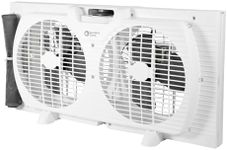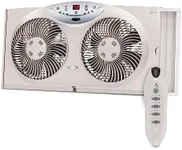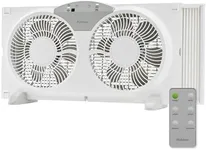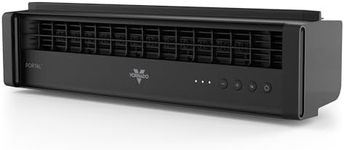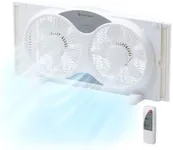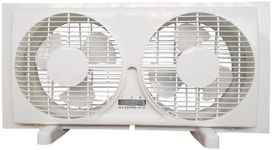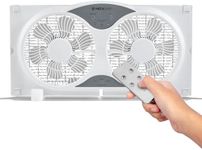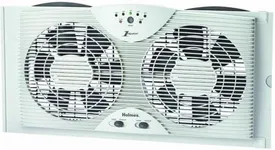Buying Guide for the Best Vertical Window Fans
Choosing the right vertical window fan can make a significant difference in your home's comfort and air quality. Vertical window fans are designed to fit into narrow windows and provide efficient air circulation. When selecting a vertical window fan, it's important to consider several key specifications to ensure you get the best fit for your needs. Here are the main factors to consider and how to navigate them.Size and FitThe size and fit of a vertical window fan are crucial because it needs to fit snugly into your window without leaving gaps that could let in outside air or insects. Measure your window's dimensions before shopping and look for fans that match those measurements. Some fans come with adjustable panels to fit a range of window sizes, which can be very convenient. Ensure the fan you choose can be securely installed in your window to avoid any stability issues.
Airflow Capacity (CFM)Airflow capacity, measured in cubic feet per minute (CFM), indicates how much air the fan can move. This is important because it determines how effectively the fan can cool and ventilate your space. For small rooms, a fan with a lower CFM (around 100-300) may be sufficient. For larger rooms or spaces with poor ventilation, look for a higher CFM (400 and above). Consider your room size and ventilation needs when choosing the right airflow capacity.
Speed SettingsSpeed settings allow you to control the fan's airflow intensity. This is important for adjusting the fan's performance to your comfort level and the room's needs. Fans typically come with at least two or three speed settings. If you want more control over the airflow, look for a fan with multiple speed options. Think about how you plan to use the fan—whether you need gentle air circulation or powerful cooling—and choose a model with appropriate speed settings.
Noise LevelThe noise level of a fan can affect your comfort, especially if you plan to use it in a bedroom or office. Noise levels are usually measured in decibels (dB). A quieter fan (below 50 dB) is ideal for sleeping or working environments, while a slightly louder fan may be acceptable in living areas or kitchens. Consider where you will be using the fan and how sensitive you are to noise when selecting a model.
Energy EfficiencyEnergy efficiency is important for reducing your electricity bills and minimizing environmental impact. Look for fans with energy-saving features such as programmable timers, eco modes, or Energy Star certification. These features can help you use the fan more efficiently and save energy. If you plan to use the fan frequently, investing in an energy-efficient model can be beneficial in the long run.
ReversibilityReversibility refers to the fan's ability to reverse the airflow direction. This feature is useful for both cooling and ventilating your space. In the summer, you can set the fan to blow air out, removing hot air from the room. In cooler weather, you can reverse the airflow to bring fresh air in. If you want a versatile fan that can be used year-round, look for a model with reversible airflow.
Ease of Installation and MaintenanceEase of installation and maintenance is important for convenience and longevity of the fan. Look for fans that come with clear instructions and all necessary mounting hardware. Some models are designed for easy cleaning, with removable grills or blades. Consider how often you will need to clean the fan and how easy it is to access the parts. A fan that is easy to install and maintain will save you time and effort.
